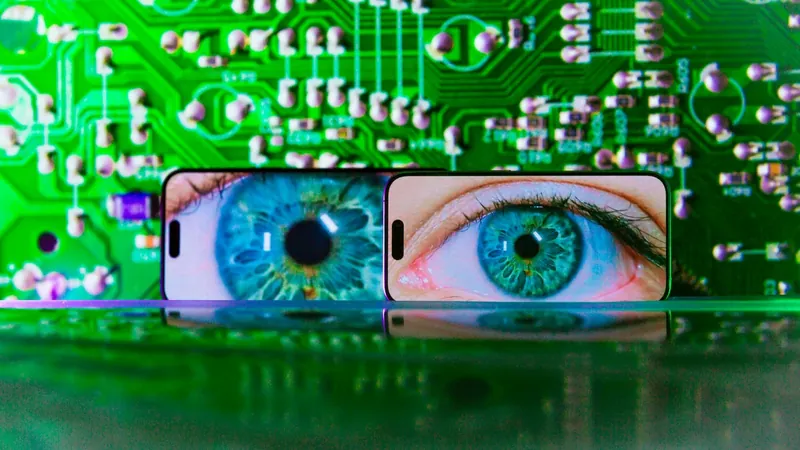
The Groundbreaking Technology Coming to Future Android Phones That Will Confirm Your Videos Are Authentic and Not AI-Generated!
2024-10-27
Author: Li
The Rise of Digital Content Authenticity Issues
In a world flooded with digital content, the authenticity of what we see online is increasingly called into question. The rise of generative AI tools to create videos has transformed deepfakes from obscure parodies into a pervasive issue that we encounter daily. With this tech evolution comes a pressing need for validation—how can we prove that the content we capture is genuine?
The C2PA Standard and Industry Collaboration
Tech giants are stepping up to the challenge. Nikon and Adobe, among others, are joining forces under a new standard known as C2PA (Coalition for Content Provenance and Authenticity), which aims to use watermarking technology to verify the origins of digital content. This is a monumental effort in combating misinformation and enhancing transparency.
Truepic's Tamper-Proof Watermarking Technology
Leading this initiative is San Diego-based Truepic, a company at the forefront of developing tamper-proof watermarking technology. Over recent years, Truepic has collaborated with Qualcomm to integrate its revolutionary technology into smartphones using Snapdragon chips—set to empower users to prove not only where and when photos were taken, but also to establish the authenticity of videos and audio recordings.
Qualcomm's Commitment to AI Transparency
In a statement, Judd Heape, Qualcomm's VP of product management, emphasized the importance of fostering a responsible AI landscape. "When an image or video is captured on a Snapdragon device, users will have clarity about its authenticity, any modifications, and the entire timeline of that content," Heape explained.
The Growing Importance of Visual Data Integrity
With approximately 70% of developments in AI and machine learning being directed toward image processing, ensuring the integrity and validity of visual data is becoming increasingly critical. Initially designed for professional needs—like verifying car insurance claims or enhancing journalistic credibility—Truepic’s technology is now transitioning to mobile devices. As many everyday users rely on smartphones rather than professional cameras, embedding this capability directly into the phone's chip enhances security against tampering.
Embedding Security at the Hardware Level
"What we’re doing isn't just a software layer on top of Android; it’s embedded in the hardware itself, making it far more secure," Heape asserted. As for implementation, major smartphone manufacturers still have the choice to leverage Truepic's capabilities, but at least two are already planning to utilize these features in upcoming models. "Expect the first phone equipped with this authenticating technology to hit the market by 2025," Heape revealed.
Pressure on Smartphone Manufacturers
With major players like Meta and OpenAI signing onto the C2PA standard, alongside increasing pressure from regulators and lawmakers, smartphone manufacturers are poised to face growing expectations to deliver tools that verify the authenticity of what users capture.
A Vision for the Future
Imagine a future—just three years from now—where a simple logo on your social media images can instantly confirm their provenance. "That’s my aspiration," Heape dreamt aloud. This vision offers hope for renewed trust in our digital experiences as we navigate a landscape where skepticism has become second nature.
Conclusion
Stay tuned! As the fight against AI-generated misinformation heats up, your next smartphone may just be your greatest ally in distinguishing between reality and fabrication!


 Brasil (PT)
Brasil (PT)
 Canada (EN)
Canada (EN)
 Chile (ES)
Chile (ES)
 España (ES)
España (ES)
 France (FR)
France (FR)
 Hong Kong (EN)
Hong Kong (EN)
 Italia (IT)
Italia (IT)
 日本 (JA)
日本 (JA)
 Magyarország (HU)
Magyarország (HU)
 Norge (NO)
Norge (NO)
 Polska (PL)
Polska (PL)
 Schweiz (DE)
Schweiz (DE)
 Singapore (EN)
Singapore (EN)
 Sverige (SV)
Sverige (SV)
 Suomi (FI)
Suomi (FI)
 Türkiye (TR)
Türkiye (TR)